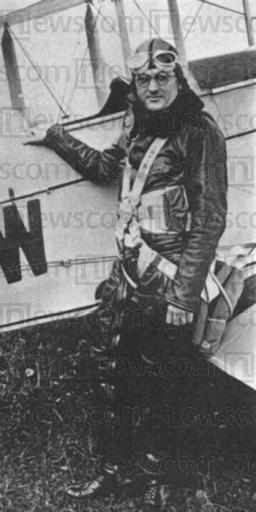
On April 19, 1919, Leslie Leroy Irvin made the world’s first free fall parachute descent using a rip cord, rather than a canister or tether line attached to the aircraft to pull open the parachute. Working with the US Army Air Service parachute research team, Irvin made the historic jump from a plane over McCook Field near Dayton, Ohio. He broke his ankle but was inspired to start his own parachute business.
On April 19 of this year, Airborne Systems Group, which has grown from Irvin’s pioneering company, marked the 90th anniversary of that historic parachute jump at its Pennsauken, New Jersey, world headquarters. Irvin’s early 20th century experiments later pioneered an entire parachute industry. Today, Airborne Systems is a world leader in the design, development, and manufacture of parachutes for military, personnel and cargo systems, space and air vehicle recovery systems, and deceleration systems for high-performance aircraft. The company also provides airbags, ordnance flare ‘chutes and weapons delivery systems. It has manufacturing facilities in the United States, Canada and in the U.K., all from that perilous 1911 leap of faith.
Born near Los Angeles, Irvin started a ballooning and parachuting career in 1911 while in his early teens. In 1915, he joined the Universal Film Company as a stunt man for the fledging California film industry, performing acrobatics on trapezes below balloons and making descents using parachutes of his own design. His experience as a stunt man contributed to his later belief that a jumper in a free fall descent would not lose consciousness, as was widely believed.
It was in 1915, too, that he opened the Irvin Air Chute Company in Buffalo, NY. What became known as the Irvin parachute gained rapid acceptance, and by the early 1930s was in service with some 40 air forces around the world. With the start of World War II, Irvin became a major manufacturer of parachutes. During that war, Irvin parachutes saved more than 10,000 lives.
“Leslie Irvin was a parachute pioneer and a true American hero,” said Paul Colliver, a 50-year employee of the Irvin Company who worked for Leslie Irvin. “How many people can say they made something that saved tens of thousands of lives?”
During that era Irvin founded the Caterpillar Club to recognize individuals whose lives had been saved by parachutes. Today, the Caterpillar Club is one of the most famous flying clubs in the world and has awarded thousands of airmen, and a few airwomen, with gold caterpillar pins symbolizing the silk from which early parachutes were made. Some of its famous members include Charles Lindberg, Gen. James Doolittle and former astronaut John Glenn.
Irvin’s design innovations weren’t limited to parachutes. With aircraft flying at increasing altitudes, pilots were subjected to lowering temperatures. To address this requirement, Irvin designed and manufactured the classic Royal Air Force leather and sheepskin flying jackets, which became iconic during World War II. In later years, Irvin’s company also made car seat belts, slings for cargo handling and even canning machinery. The company later changed its name to Irvin Aerospace to reflect the change to the newer markets it served.
Today, Irvin Aerospace is a brand of Airborne Systems, one of the world’s largest manufacturers of parachutes and related equipment.
Web Site: http://www.irvinaerospace.com/
